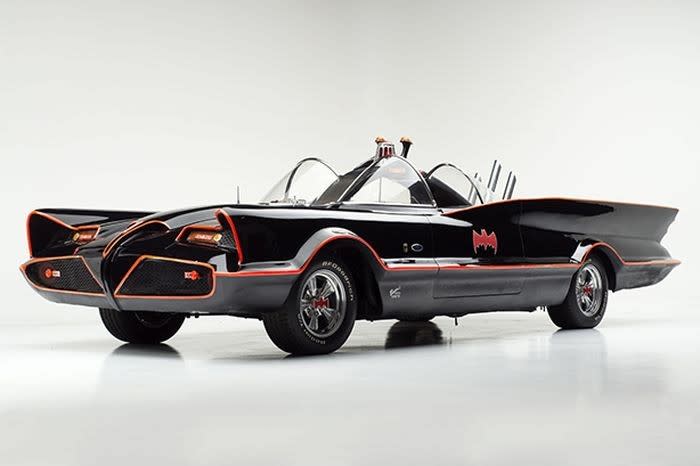Does the Batmobile Copyright Prevent You from Making a Replica?

Intellectual Property can be a legal minefield, especially to a layperson who doesn’t readily know the difference between patent, copyright and trademark. A recent decision from the 9th Circuit Court of Appeals (a Federal court that serves as an interim step between West Coast trial courts and the United States Supreme Court) has brought copyright law into the car-enthusiast realm where previously only trademark and occasionally patent issues were real concerns.
Related: What would an H.R. Giger-designed Batmobile have looked like?

Stromberg 97 carburetor showing various patent numbers. Photo by Jim O’Clair.
Briefly, a patent exists to protect the design of a functional item. For example, the kicker assembly on a Stromberg 97 carburetor is stamped PAT. 1,583,959. That refers to a 1926 patent used in the design of the 97. While that patent was in force (it expired sometime between 1934 and 1946—hey, we’re not patent attorneys here!), it prevented anyone from using the design or a derivative of that design without permission of the patent holder. The idea behind patents is that, unlike trade secrets, they allow the public access to useful inventions after a certain period of exclusive use to the inventor.
Related: What does the Batmobile have in common with the Stingray?
A trademark is a non-useful identifying feature that is associated with a product. Car folks are undoubtedly familiar with the use of the term “Crescent wrench” to identify an adjustable wrench, or “Targa top” to describe a semi-convertible hard roof panel, both of which technically refer to products produced by the Crescent Tool Company and Porsche, respectively. A person or company can obtain trademark protection either through registration with the US Patent and Trademark Office or simply by association with a product over time—such as Ford’s longstanding use of “afterburner” taillamps in the 1950s and ‘60s, or the sextet adorning the rear of Chevrolet Impalas from 1958 to 1965.
The reason for protecting trademarks is that a person or company spends a long time building up public trust, and it’s not fair to let a competitor just piggyback on that trust. Worse yet, a confused consumer might be duped into paying extra for a product without realizing that it’s not the brand he or she has come to rely on. Car enthusiasts are likely familiar with language in catalogs indicating that brand names are used only for purpose of identifying proper fitment and not to indicate licensing by the original equipment manufacturer. That’s to avoid a claim of trademark infringement by indicating that the trademark is used only nominatively; that is—to name the thing.
On the flip side, when a manufacturer wants to properly benefit from the use of a trademark, it can license the trademark from its owner. Licensed products often cost more because the trademark owner is risking its reputation on the quality of the items so marked.

 Yahoo Autos
Yahoo Autos 